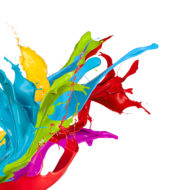
When flow takes the place of another motion factor, Laban wrote, “the expression is more intense” and the whole configuration “gains new meaning.” In the Mastery of Movement correspondence course, we tested Laban’s assertion.
Readers were asked to choose one of the transformation drives – either Passion or Vision or Spell. They were to work out the eight effort quality combinations of that drive and then embody each mood.
The Vision Drive combines the motion factors of Space, Time, and Flow (the motion factor of Weight is latent).… Read More









